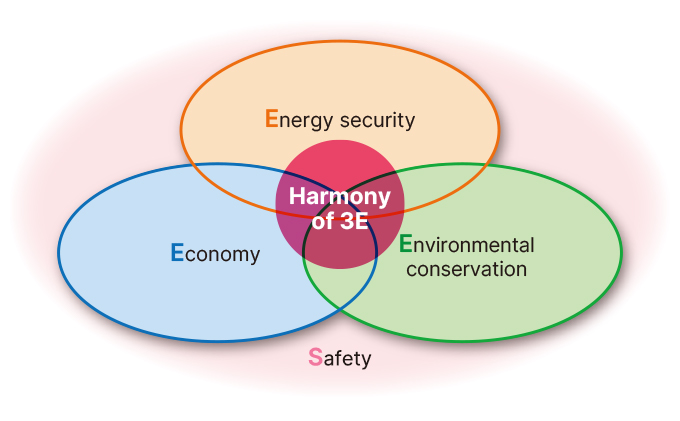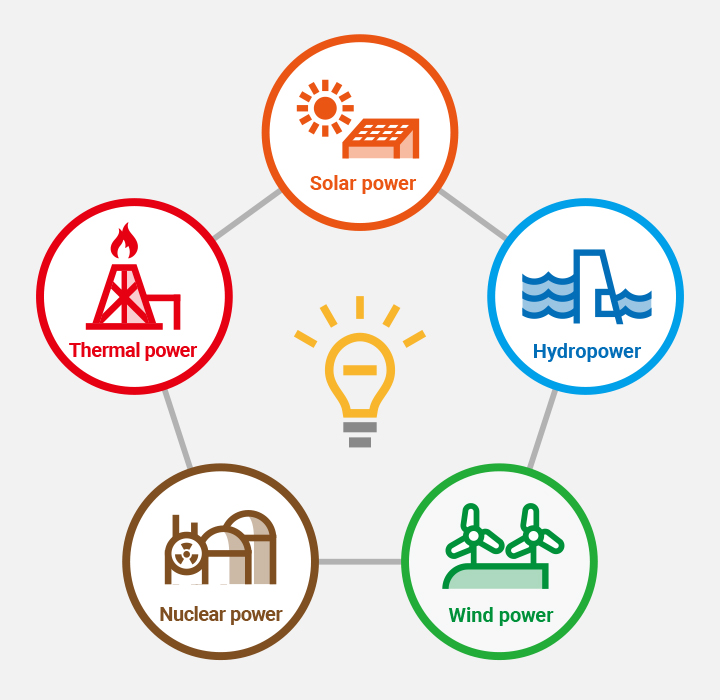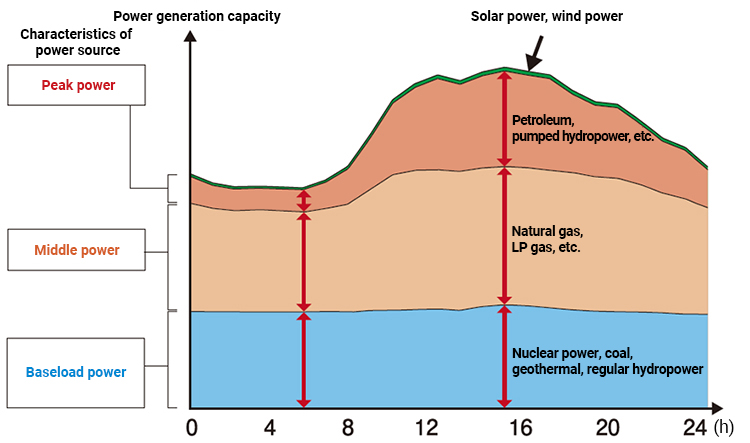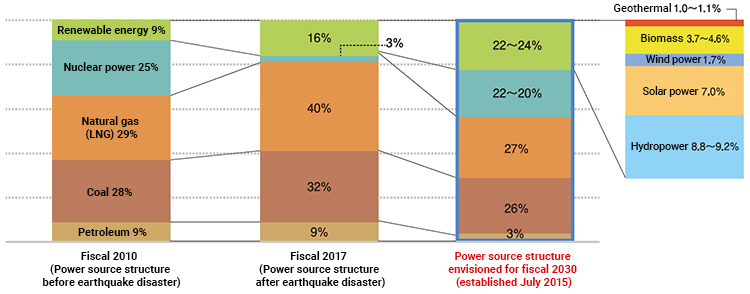Ensuring a Stable Energy Supply
Our mission is simple, yet complex: safely and reliably provide high-quality electricity.
To fulfill this mission, we must deal with a range of issues, such as the global environment and the difficulty of ensuring stable sources of energy in resource-poor Japan.
Our stance is characterized by what we call the “S+3E” approach, and we believe that a proper energy mix is essential.
S+3E

“S+3E” means giving topmost priority to safety, while aiming to provide energy in a reliable manner, keeping cost as low as possible, and giving due consideration to the environment.
“S” stands for Safety, and the 3E are
- Energy Security
- Economy, and
- Environmental Conservation
In Japan, a country with few natural resources, an energy mix combining various energy sources to generate electricity is vital for achieving “S+3E.”
Energy Mix

There are various power generation methods such as thermal power, hydropower, nuclear power, etc., but all of them have advantages and drawbacks. By combining multiple methods, the drawbacks can be made up for and a stable supply of energy becomes possible.
Features of various power generation methods
The various power generation methods differ in terms of supply stability, environmental issues, economy (power generation cost), safety, etc.
Flick for details.
| Supply stability | CO2 emissions | Economy (cost per 1 kWh) | Other aspects | |
|---|---|---|---|---|
| Nuclear power | • Fuel reserves widely distributed around the world • Fuel can be recycled • Easy to stockpile |
None (During power generation) |
10.1 yen and up | Requires thorough safety measures, radiation control, and proper disposal of waste |
| Solar power | • No fear of running out • Dependent on natural conditions |
29.4 yen | Requires wide installation area | |
| Wind power | 21.6 yen | |||
| Hydropower | 11.0 yen | Little new land for construction available | ||
| Coal-fired power | • Fuel reserves widely distributed around the world | Yes | 12.3 yen | Fluctuations in global resource prices due to increased consumption, political instability in the Middle East, and speculative activities greatly affect power generation costs |
| Natural gas-fired power | Small variation of fuel reserve distribution | Yes | 13.7 yen | |
| Petroleum-fired power | Uneven distribution of fuel reserves | Yes | 30.6–43.4 yen |
* Cost data based on “Report on Analysis of Generation Costs, Etc. for Subcommittee on Long-term Energy Supply-demand Outlook” of the Power Generation Cost Analysis Working Group (2015/05/26)
Currently, Japan is heavily dependent on thermal power generation using fossil fuels, but from the viewpoint of simultaneously achieving “S+3E,” nuclear power, which has excellent fuel price stability and stockpiling capability, also plays a role as an important power source.
A mix of energy sources to meet power demand
The amount of power consumed in a day varies considerably depending on the time of day and the season.
Power companies use three categories called “Peak power,” Middle power,” and “Baseload power” and combine these in such a way as to supply the amount of electricity that matches demand.
- Peak power
- Power generation costs are high, but output can be adjusted easily according to demand (petroleum-fired power, etc.).
- Middle power
- Power generation costs are relatively low, next to baseload power. Output can be adjusted to match demand (natural gas-fired power, etc.).
- Baseload power
- Power generation costs are low and operation is stable. Operation is continuous, regardless of day or night (nuclear power, coal-fired power, general hydropower, etc.).

Based on “Fourth Basic Energy Plan and Future Nuclear Policy” (June 2014), issued by the Nuclear Energy Subcommittee, Advisory Committee for Natural Resources and Energy
Projected energy mix in fiscal 2030
The “Basic Energy Plan” of the Japanese government predicts that the combined ratio of nuclear power, coal-fired power, hydropower and others in the power composition for “Baseload power” will be about 56% in fiscal 2030.
Nuclear power is expected to account for about 20 to 22 percent in this, meaning that it will continue to maintain a steady ratio.
The adoption of renewable energy still has various issues to overcome in terms of stable supply, cost, etc. However, the stated intention is to actively promote this sector, aiming for a ratio of 22 to 24 percent in fiscal 2030.
Flick for details.

Based on “Trends and Future Measures After Formulation of the Basic Energy Plan” (December 2018), issued by the Strategic Policy Committee, Advisory Committee for Natural Resources and Energy
Corporate Information Menu

